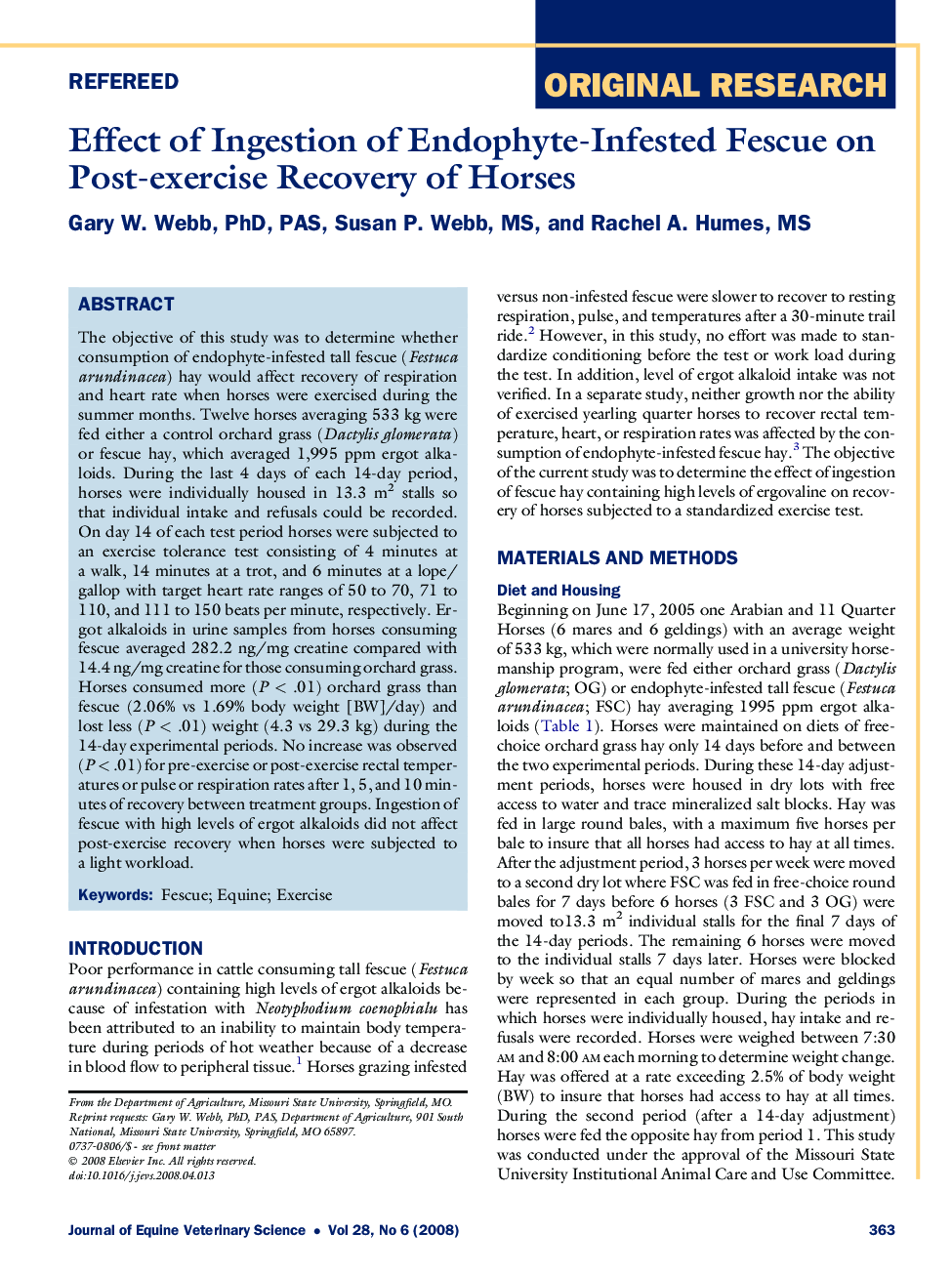| Article ID | Journal | Published Year | Pages | File Type |
|---|---|---|---|---|
| 2396595 | Journal of Equine Veterinary Science | 2008 | 4 Pages |
The objective of this study was to determine whether consumption of endophyte-infested tall fescue (Festuca arundinacea) hay would affect recovery of respiration and heart rate when horses were exercised during the summer months. Twelve horses averaging 533 kg were fed either a control orchard grass (Dactylis glomerata) or fescue hay, which averaged 1,995 ppm ergot alkaloids. During the last 4 days of each 14-day period, horses were individually housed in 13.3 m2 stalls so that individual intake and refusals could be recorded. On day 14 of each test period horses were subjected to an exercise tolerance test consisting of 4 minutes at a walk, 14 minutes at a trot, and 6 minutes at a lope/gallop with target heart rate ranges of 50 to 70, 71 to 110, and 111 to 150 beats per minute, respectively. Ergot alkaloids in urine samples from horses consuming fescue averaged 282.2 ng/mg creatine compared with 14.4 ng/mg creatine for those consuming orchard grass. Horses consumed more (P < .01) orchard grass than fescue (2.06% vs 1.69% body weight [BW]/day) and lost less (P < .01) weight (4.3 vs 29.3 kg) during the 14-day experimental periods. No increase was observed (P < .01) for pre-exercise or post-exercise rectal temperatures or pulse or respiration rates after 1, 5, and 10 minutes of recovery between treatment groups. Ingestion of fescue with high levels of ergot alkaloids did not affect post-exercise recovery when horses were subjected to a light workload.
